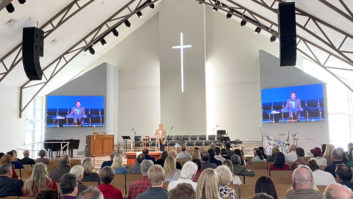
The OTT video (over-the-top) market has experienced explosive growth since 2015 as viewers have increased streaming media consumption. Subscriptions are up, and so is the use of smart devices used to watch OTT content. In 2018, eMarketer expects that 181.5 million U.S. consumers will use Smart TVs at least once a month, and by 2021, that number will reach 194.4 million consumers, which is almost 58 per cent of the population. The NPD Group estimates that over 57 per cent of all U.S. smartphone users access video content via an app at least once a month. Streaming video is the number one driver of cellular and Wi-Fi data consumption, with apps like YouTube and Netflix driving the greatest data demands.
Consumers have embraced binge-watching original TV and long-form content featuring celebrity talent. Mass market and niche OTTs are serving award-winning content and liberating consumers from overpriced cable channel bundling. With this recent growth burst, the OTT market has expanded into multiple facets: Live Events, Live TV, User-Generated Video, and Video on Demand. Companies such as Hulu, Amazon Prime, Netflix, ESPN, MLB.tv, DirecTV NOW, YouTube TV, Twitch, and HBO Now are the market leaders in these categories.
The Technical Hurdles
One of streaming media’s biggest challenges to date has been transmission: getting the signal across and delivering quality streaming video through the open internet. The complexity of the behind-the-scenes transmission ecosystem is staggering, and the nearly seamless viewing experience that most subscribers enjoy is a technical marvel.
Developing this complex delivery system, and making it reliable, has largely been the technology focus over the past few years. One of the byproducts of this focus is that streaming services haven’t prioritised audio quality. But, the fact that audio technology lags behind transmission and video quality is a scenario that is now familiar to media consumers.
Despite the famous quote that “sound is half of the experience,” audio for home entertainment tends to lag behind transmission and video technologies. On emerging media platforms, sound quality typically takes a backseat, while a focus on sound quality appears to be indicative of a maturing media platform. For example, multi-channel television sound was adopted by the FCC in 1984, about 20 years after the first colour TVs showed up in US households. In the video game industry, it took years before audio caught up with advances in 3D graphics. And, during this awkward audio catch-up phase, loudness irregularity is typically an issue.
In the 2000s, loud commercials on broadcast TV led to a slew of consumer complaints to the FCC. In 2010, Congress passed the CALM Act requiring the FCC to stem the problem. Around the same time, video game developers made strides in game mixing using middleware like Audiokinetic’s Wwise. Now, 10 years after Netflix started streaming, loudness is a point of frustration for OTT users, according to Greenlight Insights, and is often cited in customer reviews and support forums. Audio seems to be lagging again, but Smart TVs and Digital Media Players are supporting next gen audio tech like Dolby Atmos and raising consumer expectations. Today, streaming platform companies are beginning to appreciate the need to invest in resources to improve audio quality and specifically to integrate solutions that provide loudness management for consumers.
Audio Tech Improvements and Subscriber Retention
While high quality content, variety, and affordability have largely been the drivers of OTT subscriber acquisition, keeping those users on the platform will ultimately be based on the quality of their overall experience, including audio. Savvy OTTs like Netflix and Amazon Prime are already taking steps. In 2017, Netflix debuted Dolby Atmos with the release of the original movie Okja. A year later, Amazon Prime announced support for Dolby Atmos for the Tom Clancy Jack Ryan TV series.
Still, most of the popular OTT services fall short of the audio experience that consumers now expect from their smart devices. Platforms that begin investing now in higher quality audio and solve for these technology obstacles will surface as market leaders based on consumer satisfaction and retention. Integrating loudness management solutions will allow subscribers to take their thumbs off the volume control, and bring the OTT experience to the next level, beyond convenience.







